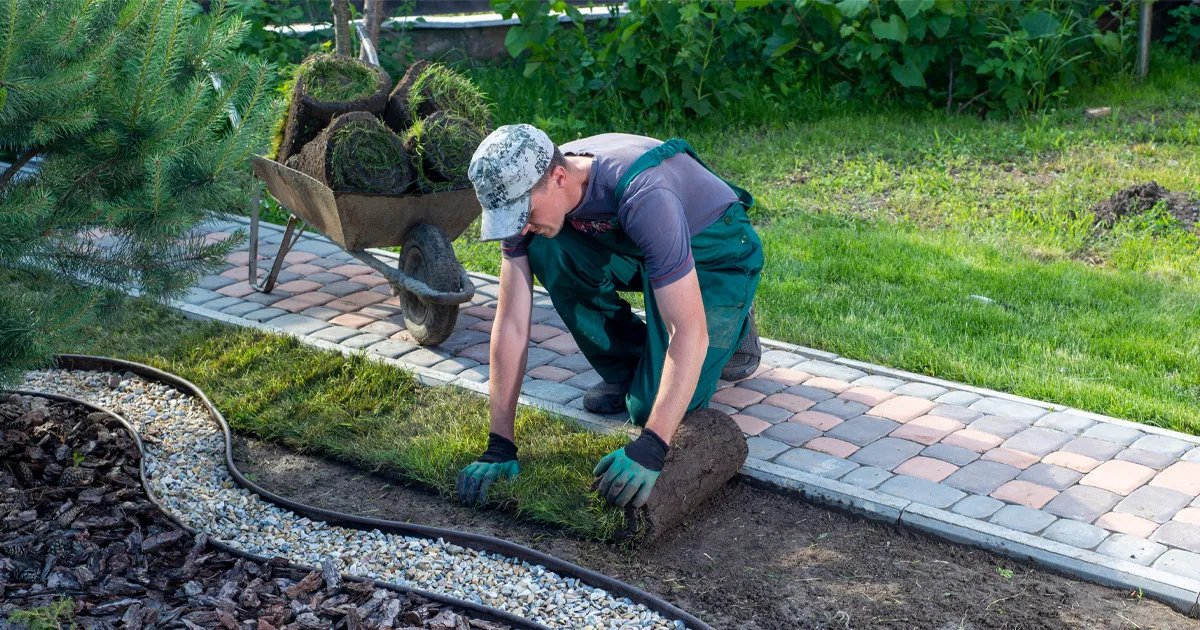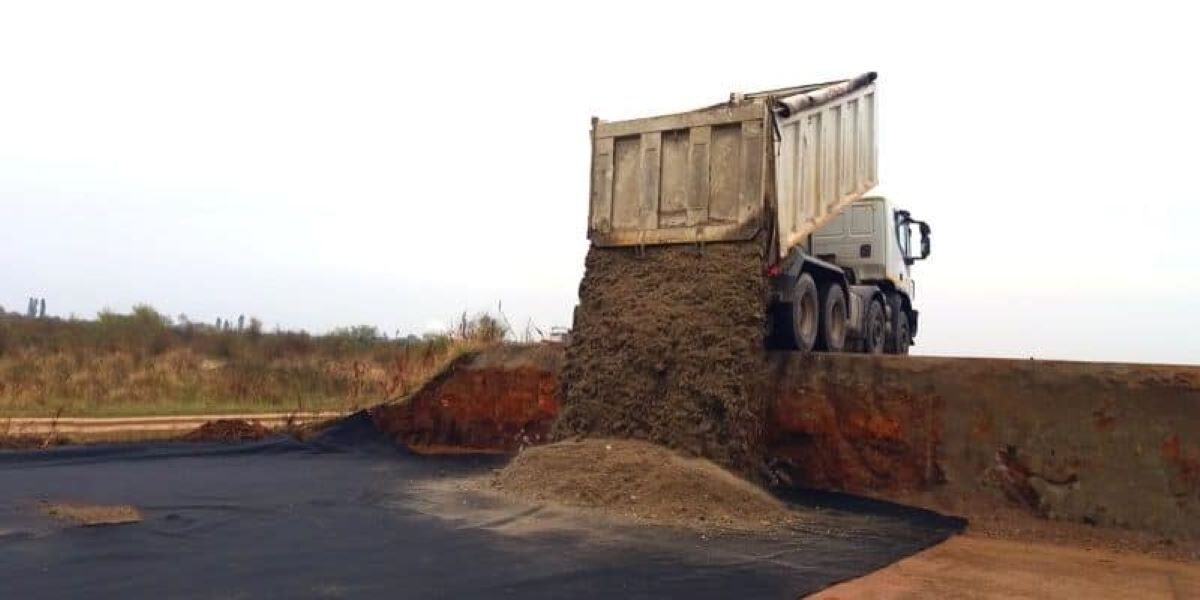Home>Gardening Basics>Getting Started>How To Get A Landscaping License In California


Getting Started
How To Get A Landscaping License In California
Modified: January 22, 2024
Learn how to get started and obtain a landscaping license in California. Find out the steps, requirements, and necessary documentation.
(Many of the links in this article redirect to a specific reviewed product. Your purchase of these products through affiliate links helps to generate commission for Chicagolandgardening.com, at no extra cost. Learn more)
Table of Contents
- Introduction
- Step 1: Understanding the Requirements for a Landscaping License in California
- Step 2: Completing the Educational and Experience Requirements
- Step 3: Preparing for the Landscaping License Examination
- Step 4: Applying for the Landscaping License
- Step 5: Completing the Licensing Process
- Conclusion
Introduction
Are you passionate about landscaping and considering starting your own landscaping business in California? Before you can begin, you’ll need to obtain a landscaping license. A landscaping license demonstrates your expertise and credibility in the industry, and it’s a requirement for legally operating a landscaping business in the state.
Getting a landscaping license in California may seem like a daunting task, but with the right information and guidance, you can navigate through the process smoothly. This article will provide you with a step-by-step guide on how to get a landscaping license in California, including the requirements, educational and experience qualifications, and the licensing examination.
By obtaining a landscaping license, not only will you comply with the legal requirements, but you’ll also gain a competitive edge in the industry. Clients will trust that you have the knowledge and skills necessary to deliver high-quality landscaping services. So, let’s dive in and explore how you can obtain a landscaping license in California.
Step 1: Understanding the Requirements for a Landscaping License in California
Before you begin the process of obtaining a landscaping license in California, it’s important to have a clear understanding of the requirements set forth by the state. By familiarizing yourself with these requirements, you can ensure that you meet all the necessary qualifications and avoid any potential pitfalls along the way.
In California, the Contractors State License Board (CSLB) is responsible for regulating and issuing landscaping licenses. They have specific criteria that applicants must meet to become eligible for a landscaping license. Here are the key requirements:
- Minimum Age: You must be at least 18 years old to apply for a landscaping license in California.
- Experience: You need to have at least four years of experience working in the landscaping industry as a journeyman, foreman, supervising employee, or contractor. The experience should be within the last ten years.
- Educational Requirements: While there are no specific educational requirements for a landscaping license, having a formal education in landscaping or a related field can provide you with a competitive advantage.
- Passing a Background Check: All applicants must pass a criminal background check conducted by the CSLB. Any past felony convictions related to the landscaping industry may affect your eligibility for a license.
- Liability Insurance: You must have a minimum liability insurance coverage of at least $2,500 for property damage, $1,000 for bodily injury, and $5,000 for the aggregate.
It is essential to thoroughly review the requirements outlined by the CSLB and ensure that you can meet each criterion before proceeding with the license application process. Meeting these requirements demonstrates your commitment to professionalism and legal compliance in the landscaping industry.
Now that you have a clear understanding of the requirements, let’s move on to the next step of the process: completing the educational and experience requirements.
Step 2: Completing the Educational and Experience Requirements
In order to meet the educational and experience requirements for a landscaping license in California, you need to demonstrate that you have the knowledge and skills necessary to work in the industry.
While there are no specific educational requirements, pursuing a degree or certificate program in landscaping, horticulture, or a related field can provide you with valuable knowledge and enhance your credibility as a professional landscaper. There are numerous educational institutions, community colleges, and vocational schools in California that offer programs in landscaping and horticulture. Consider enrolling in these programs to gain a solid foundation in landscaping principles, plant identification, irrigation systems, and other essential areas of study.
In addition to formal education, you must also meet the experience requirements. The CSLB requires a minimum of four years of experience in the landscaping industry within the past ten years. This experience can be obtained through various roles such as working as a journeyman, foreman, supervising employee, or contractor. Keep in mind that the CSLB may require documentation, such as tax returns, W-2 forms, or signed statements from previous employers, to verify your experience.
It’s worth noting that the CSLB allows for certain exemptions to the experience requirements. For example, if you have a degree or certificate in landscape architecture or horticulture, or if you have served in the military in a landscaping-related position, you may qualify for an exemption. Be sure to review the CSLB’s guidelines to determine if you meet any exemptions.
As you accumulate the necessary experience and education, keep detailed records of your work history and any completed courses or certifications. These records will be essential when applying for your landscaping license and demonstrating your eligibility to the CSLB.
Once you have satisfied the educational and experience requirements, you are ready to move on to the next step: preparing for the landscaping license examination.
Step 3: Preparing for the Landscaping License Examination
Before you can obtain a landscaping license in California, you must pass the landscaping license examination. This exam is designed to assess your knowledge of the landscaping industry and ensure that you have a solid understanding of the necessary principles and practices.
The first step in preparing for the examination is to obtain the relevant study materials. The CSLB provides a comprehensive study guide that covers all the topics that will be tested on the exam. It’s essential to review this guide thoroughly and familiarize yourself with the content. Additionally, there are several reputable industry publications and online resources that can supplement your study materials and provide you with additional insights and information.
Creating a study plan is crucial to effectively prepare for the exam. Break down the study materials into manageable sections and allocate dedicated time each day to review and understand the content. Consider utilizing study aids such as flashcards, practice quizzes, and study groups to reinforce your learning and test your knowledge.
In addition to reviewing the study materials, it’s beneficial to take advantage of exam preparation courses or workshops. These courses are designed specifically to help applicants pass the landscaping license examination and often provide valuable tips, practice exams, and guidance on exam strategies. Participating in these courses can significantly increase your chances of success.
As the exam date approaches, it’s important to focus on refining your understanding of the key concepts and practicing time management. Familiarize yourself with the format and structure of the exam and simulate exam conditions by taking practice exams within the allotted time frame. This will help you become more comfortable with the exam and enhance your ability to answer questions efficiently.
Remember, the landscaping license examination is not solely about memorizing information. It’s essential to understand the reasoning and principles behind various landscaping practices. Develop a strong foundation of knowledge and critical thinking skills to confidently tackle the exam questions.
By investing adequate time and effort into preparing for the landscaping license examination, you will be well-equipped to demonstrate your expertise and pass the exam with flying colors. Once you have successfully prepared for the examination, you can move on to the next step: applying for the landscaping license.
Step 4: Applying for the Landscaping License
Now that you have met the educational and experience requirements and have prepared for the landscaping license examination, it’s time to apply for your landscaping license in California. The application process involves submitting the necessary documents and fees to the Contractors State License Board (CSLB).
The first step is to gather all the required documents. These typically include your completed license application form, proof of experience, proof of education or exemptions, proof of liability insurance, and any other supporting documents as required by the CSLB. It’s essential to carefully review the application instructions and checklist provided by the CSLB to ensure that you include all the necessary documents.
Ensure that all documents are filled out accurately and completely. Any missing or incorrect information may delay the processing of your application. The CSLB may also require you to provide additional documentation or clarification if deemed necessary.
Once you have gathered all the required documents, submit your application to the CSLB along with the required fees. The fees can vary, so make sure to check the latest fee schedule provided by the CSLB. It’s recommended to pay the fees using a secure form of payment, such as a credit card or a cashier’s check.
After submitting your application, it will undergo a review process by the CSLB. This process can take several weeks or months, depending on the volume of applications received. It’s important to be patient during this period and refrain from contacting the CSLB for status updates unless absolutely necessary.
If your application is approved, you will receive notification from the CSLB, and you will be issued a landscaping license. This license will allow you to legally operate your landscaping business in California.
On the other hand, if your application is rejected or requires further documentation or clarification, the CSLB will notify you accordingly. In such cases, follow the instructions provided by the CSLB to address any deficiencies or issues with your application.
Once you have obtained your landscaping license, you can move on to the final step: completing the licensing process.
Step 5: Completing the Licensing Process
Congratulations on obtaining your landscaping license in California! Now that you have successfully completed the application process, there are a few final steps to ensure you are fully licensed and ready to operate your landscaping business.
The first step is to obtain any necessary local permits or licenses. Depending on the location and specific requirements of the area where you intend to operate your business, there may be additional permits or licenses you need to obtain. Contact your local city or county authorities to determine if there are any specific permits or licenses required for landscaping businesses.
Once you have secured any necessary local permits or licenses, you are ready to start marketing and operating your landscaping business. Develop a comprehensive marketing strategy to reach your target audience, whether it’s residential clients, commercial clients, or both. Use various channels such as online platforms, social media, local advertisements, and word-of-mouth referrals to promote your services and generate business.
As you begin working on landscaping projects, it’s essential to maintain accurate records, including contracts, invoices, and project details. Keeping organized records will not only help you stay on top of your finances but also serve as proof of your professional conduct and compliance with industry standards.
It’s also important to continue expanding your knowledge and skills in the landscaping field. Stay updated with the latest trends, technologies, and best practices through industry publications, workshops, conferences, and networking events. This continuous learning will not only benefit your own professional growth but also enhance the quality of service you provide to your clients.
Lastly, don’t forget to renew your landscaping license on time. In California, landscaping licenses are typically valid for two years. The CSLB will send you a renewal notice prior to the expiration date of your license, so make sure to follow the instructions provided and submit the necessary fees and documentation to maintain your license.
By completing the licensing process, you have demonstrated your commitment to professionalism and excellence in the landscaping industry. With your landscaping license in hand, you are now ready to embark on a fulfilling and successful journey as a licensed landscaper in California.
Conclusion
Obtaining a landscaping license in California is a significant step towards starting and operating a successful landscaping business. By understanding the requirements, completing the necessary educational and experience qualifications, preparing for the licensing examination, and successfully applying for the license, you have demonstrated your commitment to professionalism and compliance in the industry.
Throughout this journey, it’s important to remember that obtaining a landscaping license is not just a legal requirement, but also a symbol of expertise and credibility. Clients will trust that you have the knowledge and skills necessary to deliver exceptional landscaping services.
As you progress in your landscaping career, continue to stay updated with industry trends, expand your knowledge and skills, and strive for continuous improvement. By doing so, you will distinguish yourself from the competition and offer the highest quality of service to your clients.
Lastly, remember to renew your landscaping license on time and adhere to any local regulations or permits required for your business location. Maintaining compliance with licensing requirements and local permits will ensure the smooth operation of your landscaping business.
Now that you have all the information and guidance needed to obtain a landscaping license in California, it’s time to take the necessary steps to achieve your goal. Stay motivated, committed, and focused on building a successful career in the landscaping industry.
So, go ahead and embark on your journey as a licensed landscaper in California. Your passion, expertise, and dedication will undoubtedly make a positive impact on the environment and the lives of your clients.









